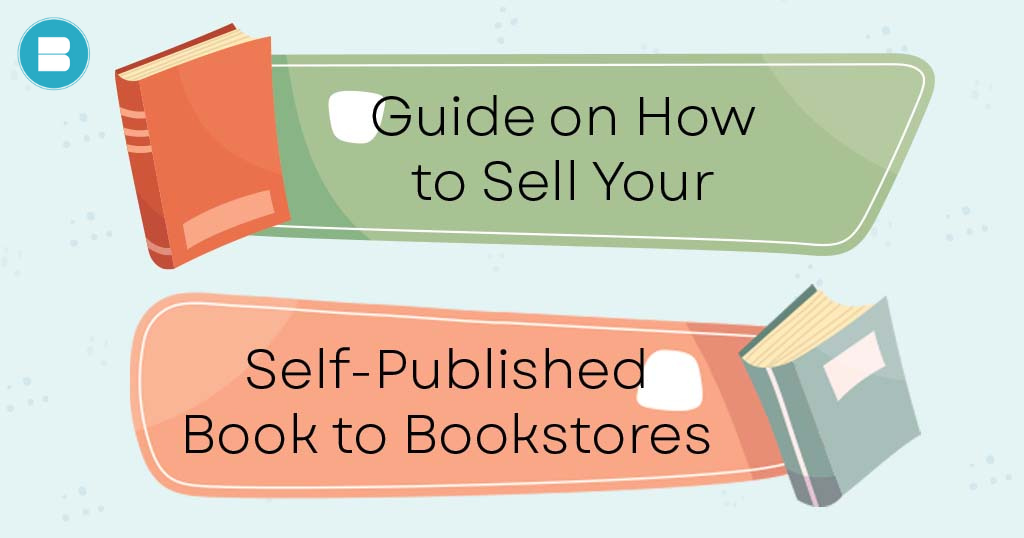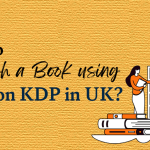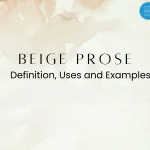As an aspiring author, you’ve poured your heart and soul into crafting your self-published book. You’ve navigated the intricacies of the writing process, meticulously edited your work, and embraced the journey of self-publishing. Now comes the exciting yet challenging phase: getting your book onto the shelves of independent bookstores.
Read: How to Promote Your Book on Amazon: Budget-Friendly Hacks to Boost Sales
In the past, this might have seemed like a daunting task, but times have changed. The landscape of publishing has evolved, and the doors to independent bookstores are more accessible than ever before. So, how do you navigate this new terrain and successfully sell your self-published book to these cherished community hubs of literature? Let’s dive into the guide on how to achieve just that.
- Embrace the shift in perspective
- Forge genuine relationships
- Understand Your Audience
- Discounted and returnable
- Prioritise Quality
- Seamlessly Shelvable
- Appropriate retail pricing
- Partnering with Reputable Distributors
- Support for Sell-Through
- Leverage online platforms
- Embrace the shift in perspective:
Self-published books are no longer unfairly stigmatised due to a perceived lack of content and quality. The publishing scene has changed dramatically, thanks to the passion and devotion of self-published authors who have raised their works to challenge the standards of major publishers. As you celebrate your Amazon success, it’s vital to remember the obstacles that independent booksellers confront in a world dominated by internet behemoths like Amazon.
In the face of digital supremacy, these bookshops, which are frequently local gems, seek to retain their relevance and build a sense of community. This recognition serves as the cornerstone of your strategy. Rather than just emphasising your book’s successes, customise your pitch to underline how your work might contribute to the distinct atmosphere of their store. Speak to the essence of your book—the story, its themes, and its potential to resonate with their customers.
Example: Imagine you’ve authored a gripping mystery novel set in a small coastal town. While your book enjoys considerable success on Amazon, you recognise that independent bookstores offer an immersive experience that online platforms can’t replicate. As you approach these bookstores, your pitch could revolve around the camaraderie your mystery novel could foster among local readers. By focusing on how your book can enrich their store’s atmosphere, you tap into their need for compelling narratives that strengthen their community bonds. - Forge genuine relationships:
Cultivating ties with independent bookstores goes beyond a simple purchase. It’s a journey of mutual participation and support. Instead of relying on Google searches, take the initiative to get to know the bookshops. Engage with them by purchasing books from their shelf, not as an author but as a reader interested in what they have to offer. Encourage your family, friends, and followers to follow suit. This proactive participation strengthens your status as a literature aficionado who appreciates and respects the unique function that these businesses perform.
Your dedication to building such connections underscores your commitment to the literary community at large. Independent bookstores aren’t just places to buy books; they are beacons of culture that curate experiences for readers. When your book aligns with their sensibilities, the relationship you’ve nurtured sets the stage for a more receptive reception. - Example: Consider that you’ve penned a heartwarming children’s book that promotes kindness and empathy. Instead of limiting your engagement to selling copies, you frequent local indie bookstores, converse with the staff, and attend their events. Your enthusiasm for their space and your book’s alignment with their values create a genuine rapport. When you eventually propose stocking your book, your prior engagement distinguishes you from authors who merely seek shelf space.
- Understand Your Audience:
Understanding the specific qualities of your target demographic is the basis of good bookshop placement. Investigate the demographics of a bookstore’s clientele before entering the owner’s office. Investigate the genres they specialise in, their clients’ reading tastes, and the activities they conduct. This knowledge allows you to personalise your pitch to their readership.
Position your book as more than just a product—it’s an opportunity to add to their carefully chosen library and communicate with their readers. By demonstrating your understanding of their readers’ choices, you create confidence that your book will find a home on their shelves and will be a valuable addition to their products.
Example: Imagine you’ve written a thought-provoking science fiction novel that explores the nuances of human existence. A local independent bookstore prides itself on promoting philosophical works that spark contemplation among its avid readers. Armed with this insight, you approach the owner and convey how your novel delves into existential themes. You highlight its potential to resonate with their customers, who seek intellectually stimulating narratives. This personalised approach not only demonstrates your understanding but also positions your book as a valuable asset to their collection. - Discounted and returnable:
The practicalities of retailing lie at the heart of successful bookstore integration. Offering a 55% wholesale discount and implementing a returnable policy showcases your willingness to collaborate effectively with independent bookstores. This practise is a standard within the industry, enabling bookstores to return unsold copies for credit. By aligning with this convention, you demonstrate your understanding of the bookselling ecosystem and establish a partnership that benefits both parties.
Example: Assume you’ve written a gripping historical fiction work set in a lesser-known era. While you’ve amassed a sizable online following, you’d want to see your book on the shelves of local indie retailers. You make it financially viable for the bookshop to invest in your book by offering a 55% wholesale discount. Furthermore, providing a returnable policy ensures that the business will not incur the financial burden of unsold copies. This collaborative approach portrays you as a practical and helpful author, making your book an appealing option for bookstores. - Prioritise Quality:
Quality is paramount when it comes to capturing the interest of independent bookstores. Bookstore owners are discerning curators who seek books that not only meet industry standards but also stand out as exceptional works. Your book’s content should be meticulously crafted, offering a compelling narrative that resonates with readers. Furthermore, genre alignment is key. Your book should seamlessly fit within the existing inventory, adding value to the bookstore’s collection while catering to their readers’ preferences.
Example: Assume you’ve written a riveting thriller that expertly mixes suspense and psychological depth. As you approach independent bookshops, your emphasis on writing quality will serve as a lighthouse. You emphasise the complexities of character development, the levels of intrigue, and the captivating ideas that drive your story. By demonstrating your commitment to providing excellence, you reassure the bookstore owner that your book is a worthwhile addition to their carefully chosen inventory. - Seamlessly Shelvable:
The art of bookstore shelving goes beyond aesthetics—it’s about practicality. Bookstore owners value books that can be seamlessly integrated into their existing arrangements. While embracing uniqueness is commendable, a book’s design should not complicate the shelving process. A book that adheres to industry norms in terms of trim size, cover design, and interior layout presents a familiar face to the store’s customers, making it more likely to attract attention and find its rightful place.
Example: Consider the following scenario: You’ve authored a collection of brilliant pieces that question traditional thinking. As you strive to see your book on the shelves of independent bookstores, you give careful consideration to its appearance. You choose a trim size that corresponds to the measurements usually found in bookshops, ensuring that your book blends well with the existing layout. Your cover design, although unique, conveys professionalism and genre alignment. By emphasising flawless shelvability, you remove any impediments to your book’s appearance in the shop. - Appropriate retail pricing:
Strategically pricing your self-published book is a delicate art that requires a blend of market understanding and value assessment. Your pricing strategy should be a fusion of your book’s uniqueness and industry standards. Overpricing can deter potential buyers, while underpricing might raise suspicions about the quality of your work. Balancing these aspects ensures that your book not only appeals to your target audience but also aligns with reader expectations and market comparisons.
Example: Imagine you’ve authored a comprehensive guide to sustainable living that combines practical tips with inspiring stories. As you prepare to approach independent bookstores, your pricing strategy becomes pivotal. You research similar books on the market, considering their pricing and positioning. By setting an appropriate retail price that reflects the value your book offers—knowledge, inspiration, and a tangible guide to a better lifestyle—you ensure that potential readers perceive your book as a worthwhile investment, encouraging both bookstore owners and customers to embrace it. - Partnering with Reputable Distributors:
The distribution channel you choose carries significant weight in the eyes of independent bookstores. Establishing credibility is crucial, and partnering with reputable distributors adds a layer of legitimacy to your book. Distributors like IngramSpark are recognised within the industry for their reliability and streamlined processes. When bookstores see that your book is associated with a trusted distributor, it boosts their confidence in your book’s availability, prompt delivery, and professional handling.
Example: Suppose you’ve written a thought-provoking collection of essays that explore societal issues through a unique lens. As you engage with independent bookstores, you highlight your partnership with IngramSpark, a renowned distributor known for its commitment to quality. This assurance goes a long way in alleviating any concerns bookstore owners might have about the logistics of ordering, stocking, and managing their books. Your association with a reputable distributor signifies that you take the distribution aspect seriously, making your book an appealing option for the store. - Support for Sell-Through:
Independent bookstores thrive on community involvement and local connections. As an author, your role doesn’t end with writing the book—you’re also expected to contribute to its success through marketing and promotion. While the primary responsibility of bookstores is selling, showcasing your commitment to supporting the sell-through process strengthens their confidence in your book’s marketability. Highlight your marketing initiatives, book launch plans, and engagement with potential readers to demonstrate that you’re an invested partner.
Example: Consider that you’ve crafted a captivating mystery novel set against a historical backdrop. Your aspirations extend beyond writing; you’re determined to ensure your book reaches the right readers. When discussing your book with independent bookstore owners, you elaborate on your well-thought-out marketing strategy. You describe your plans for local author events, social media campaigns, and partnerships with book clubs. By showcasing your proactive approach, you convey your dedication to driving reader engagement and sales, thereby easing any reservations the bookstore owner might have. - Leverage online platforms:
Incorporating online platforms into your approach can complement your efforts to approach independent bookstores. Creating an author page on Bookshop.org is a step in the right direction. Bookshop.org supports independent bookstores by donating a portion of its profits to local stores. By establishing a presence on this platform, you not only demonstrate your alignment with the cause of independent bookstores but also offer readers a convenient way to connect with your work while supporting local communities.
Example: Suppose you’ve penned an inspiring memoir that chronicles your journey of resilience and personal growth. Recognising the importance of embracing both physical and digital avenues, you create an author page on Bookshop.org. Here, readers can explore your book, learn more about your story, and make purchases that contribute to independent bookstores. By leveraging online platforms in addition to physical store approaches, you showcase your adaptability and commitment to reaching readers through diverse channels.
In essence, selling your self-published book to independent bookstores requires a holistic approach that encompasses pricing strategy, distribution credibility, proactive support, and online presence. By meticulously aligning your book with reader expectations and industry norms, you enhance its appeal to bookstore owners. Demonstrating your commitment to both the book’s success and the cause of independent bookstores fosters trust and paves the way for a fruitful partnership.
Read: Here’s an essential guide on how to write & publish an autobiography.
To put it briefly, marketing your self-published book to independent bookstores requires planning, relationship-building, and a thorough awareness of the bookselling industry. As the self-publishing industry grows, the doors to these literary havens are opening wider than ever before. You may see your self-published masterpiece find its proper position among the shelves of indie shops with the appropriate approach, respect for their particular obstacles, and a dedication to mutual success. Remember that, much as your book is a labour of love, the process of selling it should be driven by a desire to connect your words with eager readers while also supporting the thriving world of small booksellers.
















